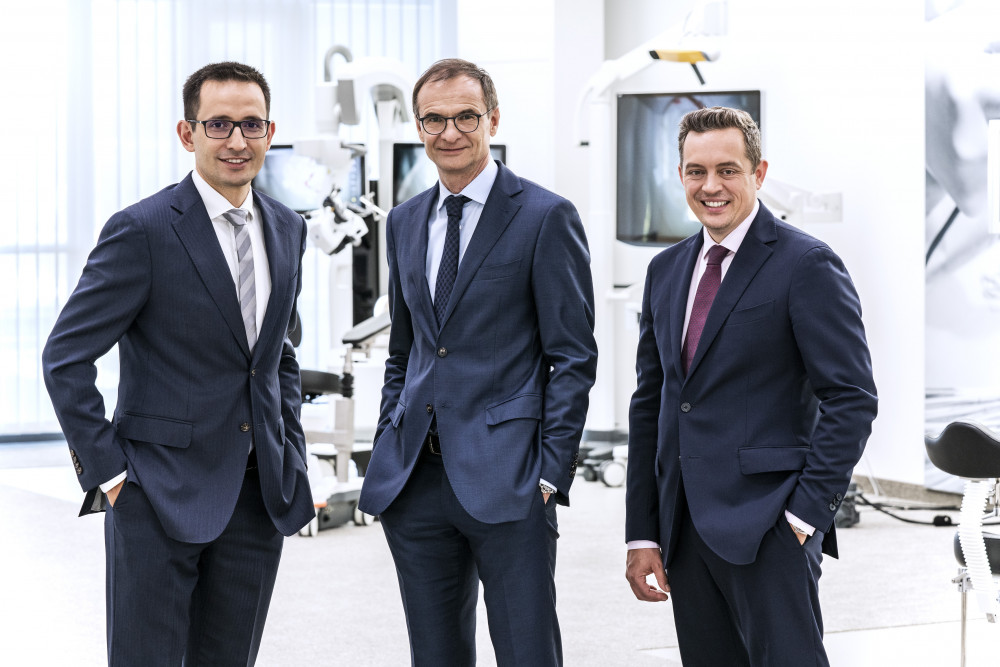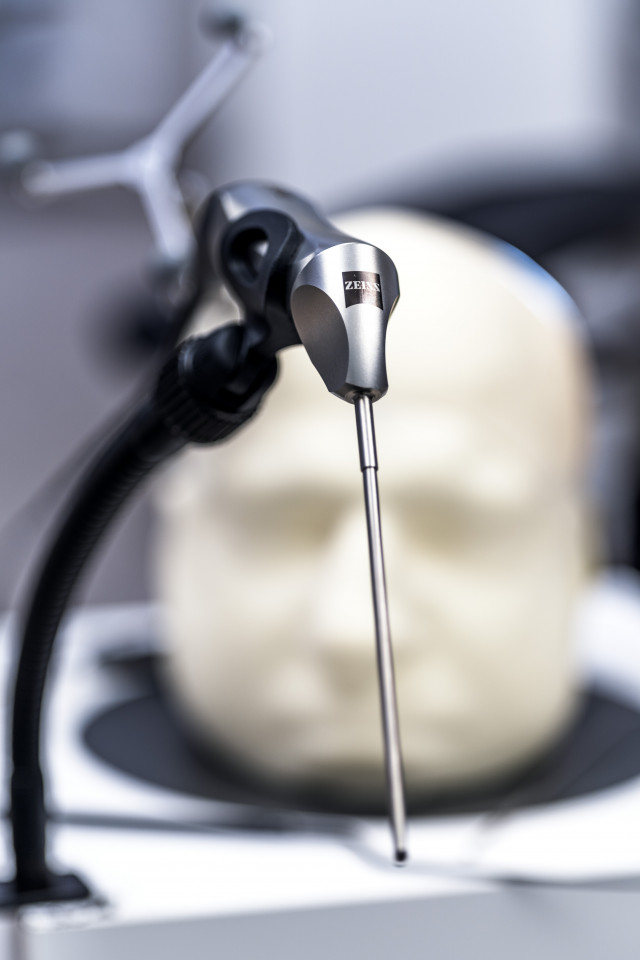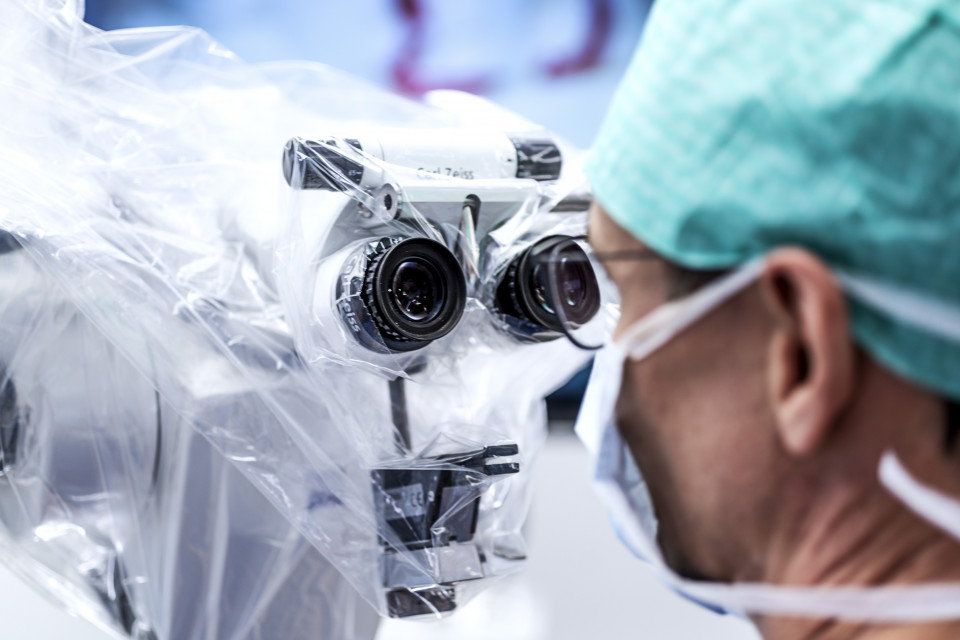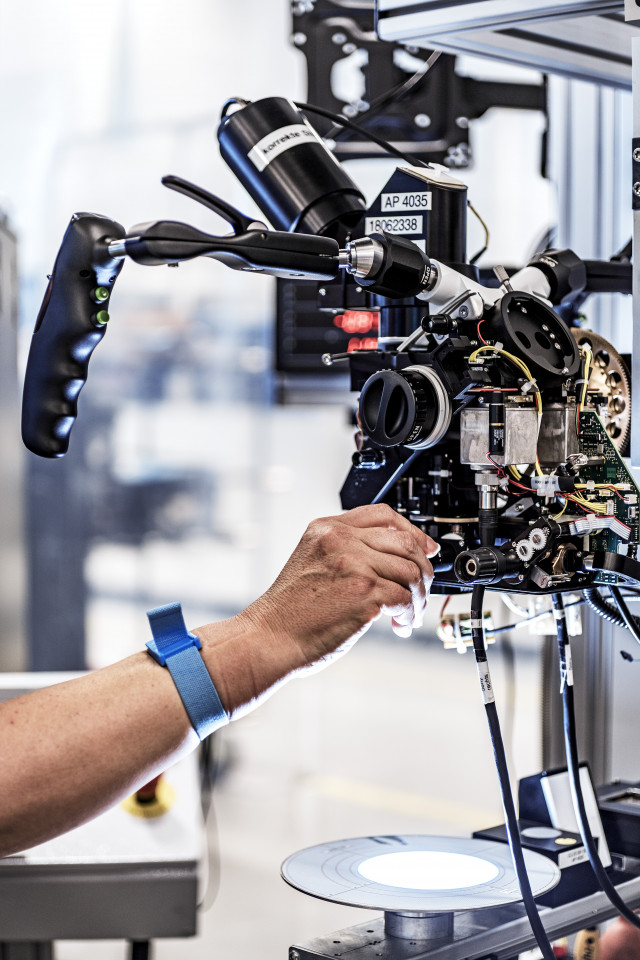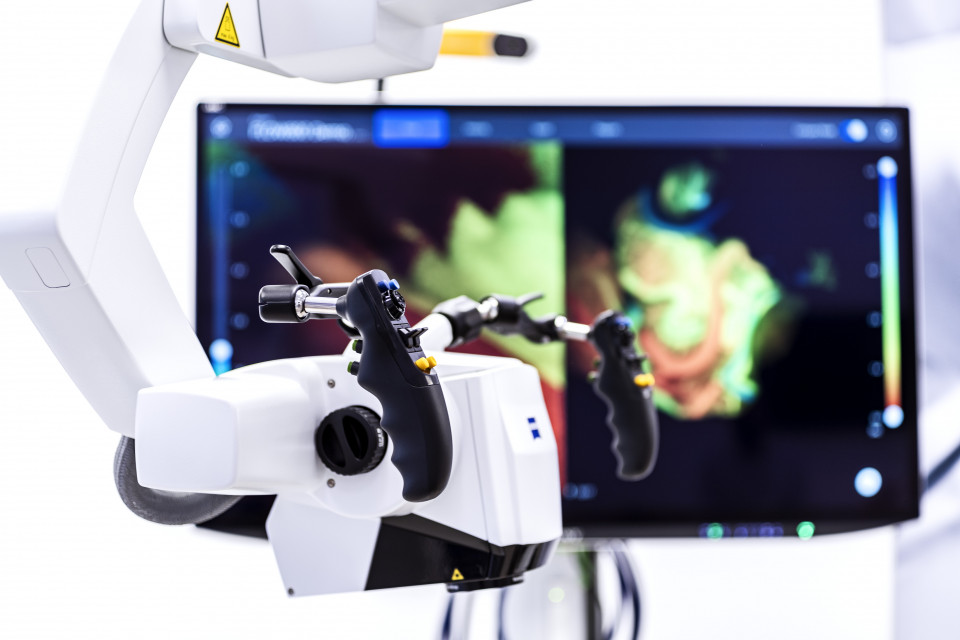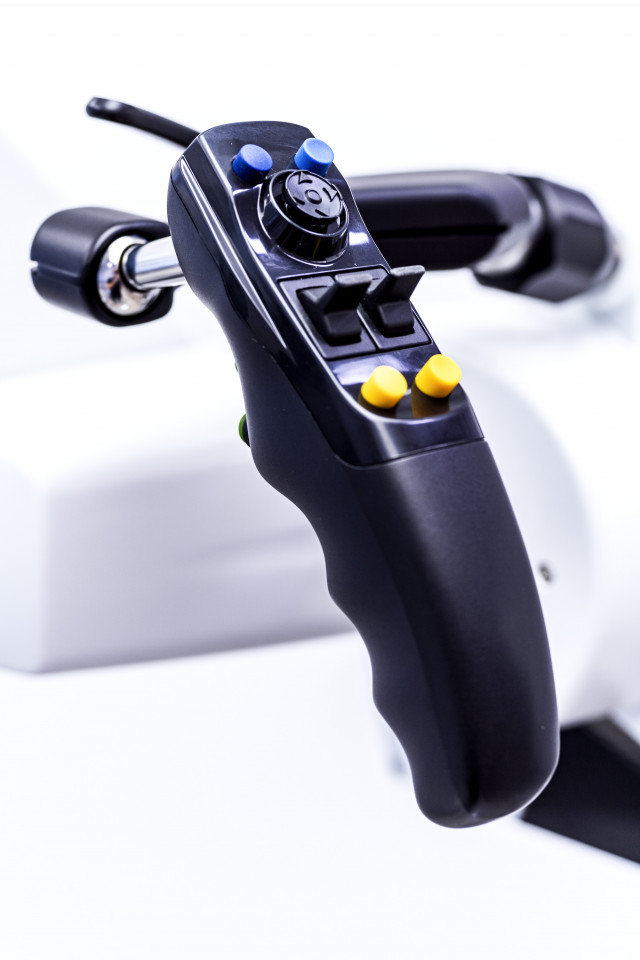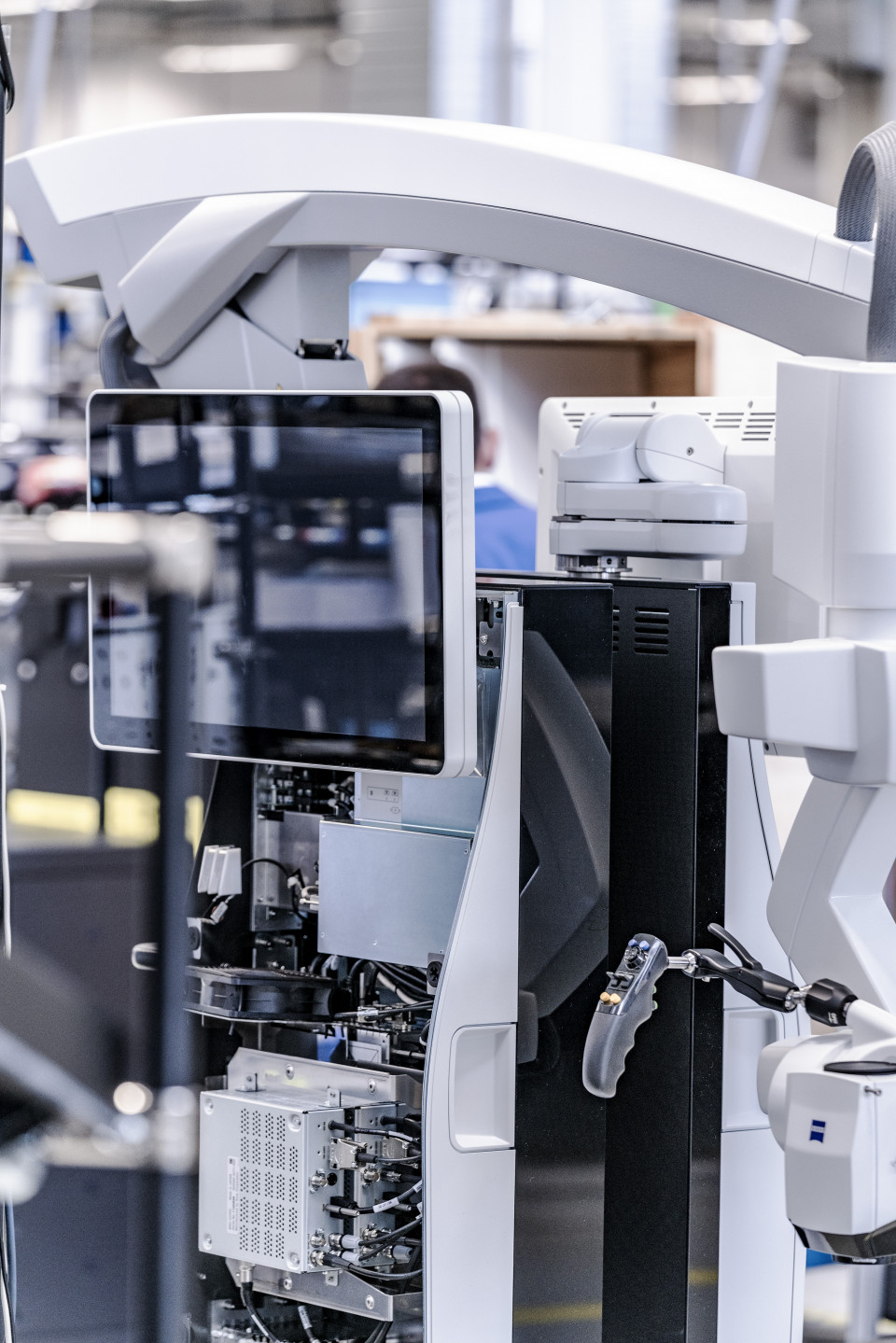Nominee 2020
Robotic Visualization System
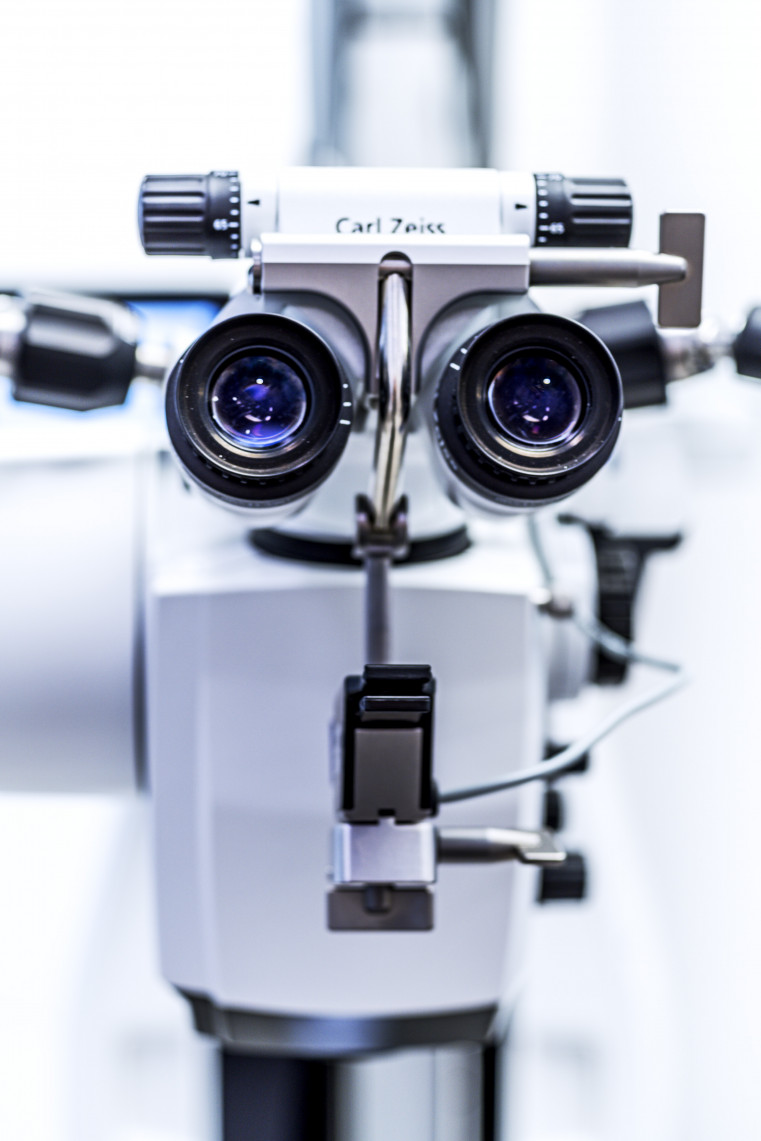
Prof. Andreas Raabe, Dr. Michelangelo Masini, and Frank Seitzinger have invented a completely new visualization system for microsurgical procedures. The invention assists surgeons performing surgery on the spine or brain by automating functions and providing unique insight into the body. The system allows for operations that are shorter and less invasive, while making it possible to obtain the best possible results.
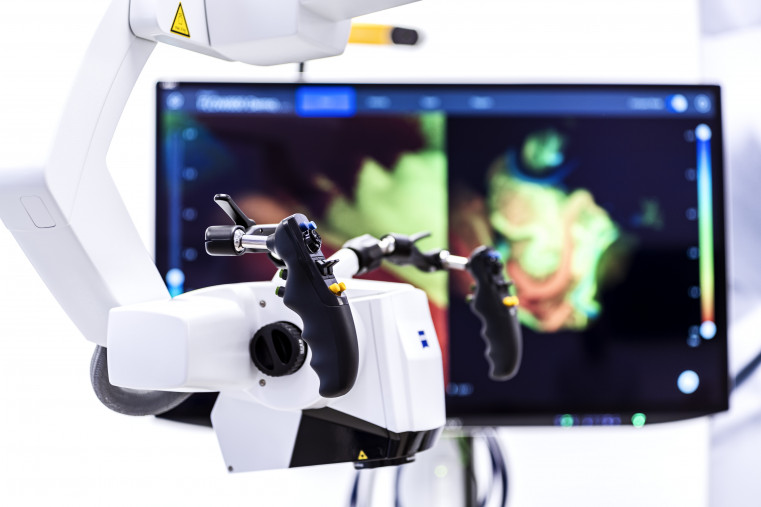
To reach these goals, Michelangelo Masini equipped the robotics-based system with three main innovations. They provide the surgeon and the OR team with all information required to be able to make informed decisions during the procedure. Frank Seitzinger was responsible for the requirements specification and the system's market launch. Andreas Raabe supported development during all project phases as a partner with clinical experience.
More Details
Resume
Prof. Dr. Andreas Raabe
- 07.05.1963
- Born in Annaberg-Buchholz, Germany
- 1981
- Abitur at the Extended Secondary School in Annaberg
- 1984 - 1986
- Studies of dentistry at the Friedrich Schiller University Jena
- 1986 - 1990
- Studies of human medicine at the Medical Academy Carl-Gustav Carus, Dresden
- 1990 - 1997
- Neurosurgery training at the Chemnitz Clinic
- 1992
- Doctorate in neurosurgery (degree: Dr. med.)
- 1994
- European Primary Examination of the European Association of Neurosurgical Societies
- 1996
- Certification as a neurosurgeon
- 1997
- International fellowship of the German Research Foundation (DFG), Cambridge, UK
- 1997 - 1999
- Assistant Medical Director at University Hospital Leipzig
- 1999
- Clinical Observer, Barrow Neurological Institute, Phoenix, USA
- 1999 - 2008
- Assistant Medical Director and Deputy Medical Director of the Department of Neurosurgery at the Johann-Wolfgang-Goethe University, Frankfurt am Main
- 2002
- Habilitation and Venia Legendi
- 2005
- Adjunct Professor, Department of Neurosurgery, Johann-Wolfgang-Goethe University, Frankfurt am Main
- since 2008
- Professor and Medical Director, Head of the Department of Neurosurgery at Inselspital, Bern University Hospital, Switzerland
Further Occupations
- 2002
- Development of Indocyanine-Green Videoangiography with ZEISS (Oberkochen) and introduction to neurosurgery
- 2013
- Development of dynamic continuous mapping during brain surgery with Inomed Medizintechnik GmbH (Emmendingen) and introduction to neurosurgery
- 2018 - 2020
- President of the Swiss Society of Neurosurgery
- since 2019
- Chair of the Vascular Section of the European Society of Neurosurgery
- since 2019
- Member of the Board of Trustees of SIRIS - Foundation for Quality Assurance in Implant Surgery
Honors and Awards
- 1990
- Science Prize "Robert Ganse" for young scientists of the Medical Academy Carl-Gustav Carus, Dresden
- 1999
- "Wilhelm Tönnis" Prize of the German Society for Neurosurgery
- 2004
- Outstanding Scientific Award, American Assosication of Neurological Surgeons for the development and investigation of ICG angiography
- 2015
- University of Shreveport International Woodard Lecture
- 2016
- Industry Award of Messe Hannover Fair with Inomed Medizintechnik GmbH for the probe for dynamic mapping during brain surgery
- 2019
- American Academy of Neurological Surgery
- 2019
- European Lecture Award of the European Society of Neurosurgery
Dr.-Ing. Michelangelo Masini
- 08.12.1980
- Born in Rome, Italy
- 2000
- Abitur at the Independent Waldorf School Esslingen
- 1997 - 2004
- Freelance IT consulting, IT development and development of office applications
- 2001
- Industrial internship at Robert Bosch GmbH, Stuttgart-Feuerbach
- 2001 - 2008
- Studies of electrical engineering and information technology at the University of Stuttgart, degree: Diplom-Ingenieur
- 2007
- Internship in the research and development department at IBM Deutschland GmbH, Böblingen
- 2008 - 2012
- Engineering Doctorate at the Institute for Electrical and Optical Communications Engineering, Graduate School of Excellence advanced Manufacturing Engineering GSaME, University of Stuttgart / IPA Fraunhofer
- 2004 - 2015
- Entrepreneur, Stuttgart
Own company for electrotechnical developments and consulting with the focus on special machines in automation technology - 2012 - 2015
- Manager Electronics and Embedded Systems professional Sweepers und Scrubbers bei Alfred Kärcher GmbH & Co KG, Winnenden
Responsible for process development and introduction, development and introduction of a new software architecture, support of external development service providers and research partners - 2015 - 2016
- Head of Digital and Video Technology Development at Carl Zeiss Meditec AG, Oberkochen
Development of components with focus on electronics and embedded systems - 2015 - 2016
- Head of Neuro Development at Carl Zeiss Meditec AG, Oberkochen
Responsibility for digital systems, responsibility for overall development of the neuro-operative microscope - since 2016
- Head of Research & Development at Carl Zeiss Meditec AG, Oberkochen
Responsibility from research to mass production readiness of products from visualization in microsurgery and ophthalmology as well as phaco/vitrectomy - since 2019
- Head of Research & Development Visualization at Carl Zeiss Meditec AG, Oberkochen
Global responsibility for innovation in the Visualization division, cross-location organizational and cultural as well as standard and process development
Further Occupations
- 2004 - 2007
- Voluntary work as a member of the board of directors of the Stuttgart student body
- 2006 - 2007
- Voluntary work as a member of the administrative board of the Stuttgart student body
- 2010 - 2012
- Voluntary work as representative of the doctoral students of the GSaME, committees: board of trustees, general assembly, organisation GSaMEing 2012, foundation FRaME e.V.
Honors and Awards
- 2008 - 2012
- DFG (German Research Foundation) scholarship holder in the doctoral programme of the Graduate School of Excellence advanced Manufacturing Engineering GSaME, University of Stuttgart, additional interdisciplinary training programme with 96 ECTS (business studies, mechanical engineering, computer science)
- 2010
- Best Paper Award for “Wireless field bus communication with software defined IR-UWB in a manufacturing environment. 5th International Conference on Ultrawideband and Ultrashort Impulse Signals (UWBUSIS)”
Frank Seitzinger, MBA
- 09.02.1975
- Born in Ansbach, Germany
- 1995
- Abitur at Platen Grammar School, Ansbach
- 2000 – 2002
- Undergraduate studies in biology, human and movement physiology at the University of California, Berkeley, USA, degree: Bachelor of Science
- 2002 – 2003
- Hospital Respiratory Laboratoy Technician at the University of California, San Francisco, USA
- 2004
- Administrative employee at Medical Data Exchange, Long Beach, USA
- 2004 – 2008
- Quality and Project Manager at the University of California, San Francisco, USA
- 2006 – 2008
- Graduate studies in business administration at the University of San Francisco, degree: MBA - finance and marketing
- 2008 – 2009
- Product Manager and Sales Manager Germany at nSpire Health, Oberthulba
- 2009
- Head of Sales EMEA at nSpire Health, Oberthulba
- 2010 – 2015
- Director Global Marketing, Site Manager and Authorized Signatory at CareFusion Germany 234 GmbH, Höchberg
- since 2015
- Head of the Business Sector Visualization at Carl Zeiss Meditec AG, Oberkochen
Further Occupations
- 2008
- Membership Beta Gamma Sigma
- 2010
- White Belt, Lean Six Sigma
Contact
Press
Sarah Hailer
Manager Media Relations
ZEISS Gruppe
Phone: +49 (0) 7364 / 20 87 740
E-Mail: sarah.hailer@zeiss.com
Spokesperson
Prof. Dr. med. Andreas Raabe
Neurochirurgische Universitätsklinik
3010 Bern
Phone: +41 (0) 31 / 63 20 014
E-Mail: juliane.reuter@insel.ch
A description provided by the institutes and companies regarding their nominated projects
Improving Medicine through Robotics and Multi-Layered Augmentation
Robotic Visualization System improves efficiency and effectiveness of surgical procedures
The global population is growing and with it the average life expectancy. An older population requires more medical treatment and according to some studies, by 2030, 5 billion humans will have access to advanced medical care. Healthcare systems across the world can only address this growing demand if they become more efficient and effective. Modern technology, such as digital tools and AI, supports healthcare providers with these treatment modalities. ZEISS KINEVO 900 has done exactly that for the fields of spine and neurosurgery, introducing robotics, digital visualization and advanced augmentation.
Shorter OR times, less invasive procedures and faster recovery times are key aspects that healthcare systems today, but even more so in the future, will require to cope with this growing need. A key enabler are innovative technologies and treatment modalities, which give healthcare providers the necessary information to make the best informed decisions for their patients, before, after and especially during the microsurgical treatment.
The Robotic Visualization System® ZEISS KINEVO® 900 made a significant step in addressing the needs of surgeons dealing with complex and difficult procedures affecting the lives of their patients. Consisting of more than 100 innovations and 180 patents, the system combines robotics, digital visualization and advanced assistance solutions to give the provider as much information as possible to improve the outcome of the treatment. The development team collaborated with global clinical partners to define and develop a 3-in-1 system that unifies microscopic, exoscopic and endoscopic components to optimize the tool set of the surgeon.
Scaling Efficiency and Effectiveness with Innovation
Surgical microscopes are constantly in motion during a procedure to visualize all aspects of the surgical field. Through automation and robotics, ZEISS KINEVO 900 replaces unwanted manual adjustment with robotics movement, reducing cumbersome disturbances for the user workflow. Recalling saved positions at the press of a button allows the surgeon to return to a point of interest quickly, which might be helpful in case of bleeding. This advanced feature provides the surgeon with the saved focus, working distance and magnification – with minimal user interaction. Pivoting around a fixed point with the help of a foot control panel allows users to keep their hands in the surgical field and concentrate on their task. All surgeons prefer to use their hands for their tools, avoiding any interruption to their workflow – robotics makes this a lot easier now. In sum, surgeons have a companion who supports them in their surgical procedures, but with the surgeon still being in full control.
Modern visualization technology is at the brink of a major shift, from classical optical to fully digital. Driving this change are modern augmented reality innovations, such as overlaid surgical approaches or highlighted tissue structures, that can be shown on 4K 3D monitors. The new digital environment further allows for the extraction of information from the image – for overlays of fluorescence images or intraoperative visualization of blood flow – to increase surgical insights during the procedure. More information means better informed decision making and a potentially more effective treatment for the patient. Student doctors, OR staff and other doctors also benefit from the new digital OR. They can be much more deeply involved in the procedure, learning, assisting and supporting the case to drive better outcome.
Traditional visualization tools, such as surgical microscopes, were limited to direct line of sight to see hidden structure, the surgical workflow had to be interrupted to bring in other modalities. With the plug-in tool QEVO® from ZEISS, the ZEISS KINEVO 900 has a micro-inspection tool tailored to the microsurgical use case, allowing the surgeon to look around corners. Seeing behind a treated aneurysm to ensure the clip is placed correctly or looking up into a tumor cavity to ensure no unhealthy tissue is left over, are just two examples of what is possible. Prior to ZEISS KINEVO 900 this was only possible with more time-consuming measures.
With many more innovations inside, the system intends to make the daily work of surgeons across the globe easier and hopefully support a better outcome – also in the most critical situations.
In Use Across the Globe
Many institutions have acknowledged the benefits of the Robotic Visualization System to make surgical treatment more effective and efficient. Since the introduction of ZEISS KINEVO 900 in the spring of 2017, the system has achieved regulatory approval in more than 100 countries and over 300,000 surgical procedures are performed with them each year. In Germany alone, the system can be found in almost all major academic institutions, with an ever-growing number of surgical wards being equipped with them.
Prof. Dr. Andreas Raabe was part of the development of the new system from the conceptual phase all the way through to the clinical evaluation period. He was a crucial partner in giving invaluable insights for the transfer of the technology into clinical practice and was a key stakeholder behind some of the innovative fluorescence technologies. Like other clinical partners he worked closely with the innovations team Dr. Michelangelo Masini set up to achieve commercialization readiness. Frank Seitzinger, as the head of the business sector, had the responsibility to ensure all relevant market needs got translated into product requirements and later for a successful market introduction. The three led an international realization team of more than 300 engineers, scientists and project team members, as well as external partners. They managed to make ZEISS KINEVO 900 a global industry leading success story that is valued by many healthcare providers and institutions.
An Innovation Ready for the Future
With ZEISS KINEVO 900, the company introduced a highly innovative product to the market, which supports surgeons in their daily work and gives them encompassing insights into anatomical and functional structures. Improvements, doctors as well as patients can benefit from.
Today the system is mainly used in neuro- and spine surgery, two disciplines with a big need for intelligent assistance systems. In many cases new innovation finds acceptance here first before scaling to other medical disciplines. The benefits of digital hybrid visualization will certainly be seen in other microscopic applications in the near future.
ZEISS KINEVO 900, a future-proof platform, will be further improved and expanded, with the first technologies already available today. Sharing images via streaming technologies and using AI algorithms to recognize patterns are just a few features that recently became available. Tying all of this into treatment modalities along the tumor workflow will again provide more information to the surgeon for better intraoperative decision making. Constantly striving for value-adding innovations is a central part of the ZEISS DNA, and the company will continue to offer their customers leading technologies to improve patient outcome.
Carl Zeiss Meditec AG
Carl Zeiss Meditec AG (ISIN: DE 0005313704), which is listed on the MDAX and TecDAX of the German stock exchange, is one of the world’s leading medical technology companies. The Company supplies innovative technologies and application-oriented solutions designed to help doctors improve the quality of life of their patients. The Company offers complete solutions, including implants and consumables, to diagnose and treat eye diseases. The Company creates innovative visualization solutions in the field of microsurgery. With 3,232 employees (as of 30 September 2019) worldwide, the Group generated revenue of €1,459.3m in fiscal year 2018/19 (as of 30 September).
The Group’s head office is located in Jena, Germany, and it has subsidiaries in Germany and abroad; more than 50 percent of its employees are based in the USA, Japan, Spain and France. The Center for Application and Research (CARIn) in Bangalore, India and the Carl Zeiss Innovations Center for Research and Development in Shanghai, China, strengthen the Company's presence in these rapidly developing economies. Around 41 percent of Carl Zeiss Meditec AG’s shares are in free float. The remaining approx. 59 percent are held by Carl Zeiss AG, one of the world’s leading groups in the optical and optoelectronic industries.
For further information visit: www.zeiss.com/med
The Insel Gruppe
Insel Gruppe is Switzerland’s leading hospital group for university and integrative medicine. It offers comprehensive healthcare based on pioneering quality, research, innovation and education. The group’s six locations (Inselspital, Aarberg, Belp, Münsingen, Riggisberg and Tiefenau) provide approximately 864 000 consultations and treat more than 65 000 in-patients per year. Insel Gruppe employs a staff of nearly 10 800 from 100 nations. It provides training for a wide range of professions and is the leading institution for further education for young physicians.
The right to nominate outstanding achievements for the Deutscher Zukunftspreis is incumbent on leading German institutions in science and industry as well as foundations.
The project "Robotic Visualization System - Efficient and effective surgical procedures“ was submitted by Deutschen Patent- und Markenamt.
Federal President Frank Walter Steinmeier will present the 24th German Future Prize to one of the three nominated teams on November 25, 2020.

 Gebärdensprache
Gebärdensprache
 Leichte Sprache
Leichte Sprache


